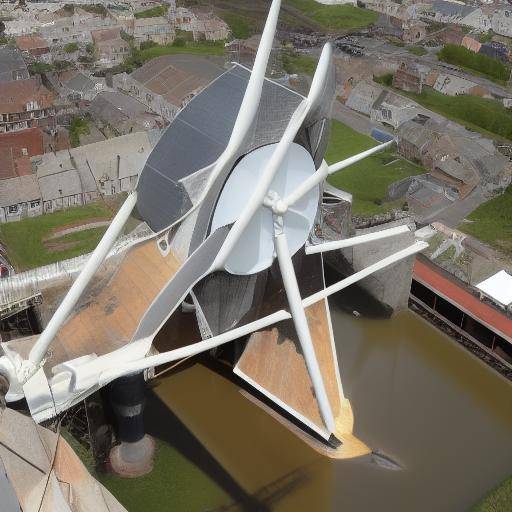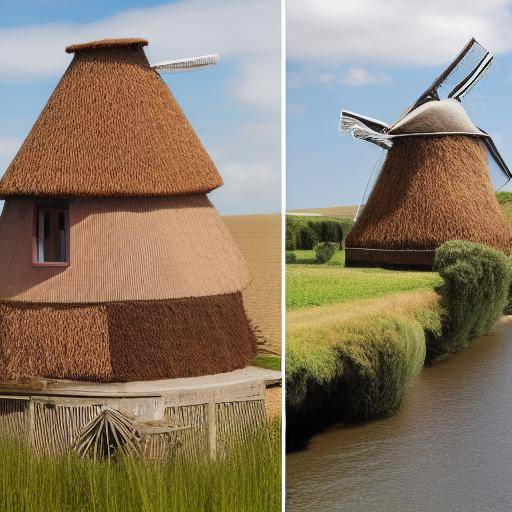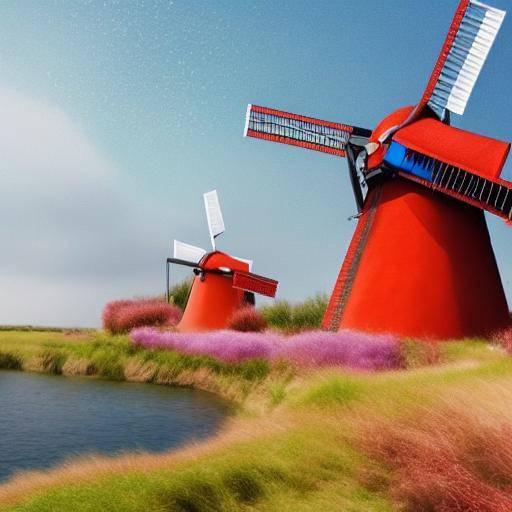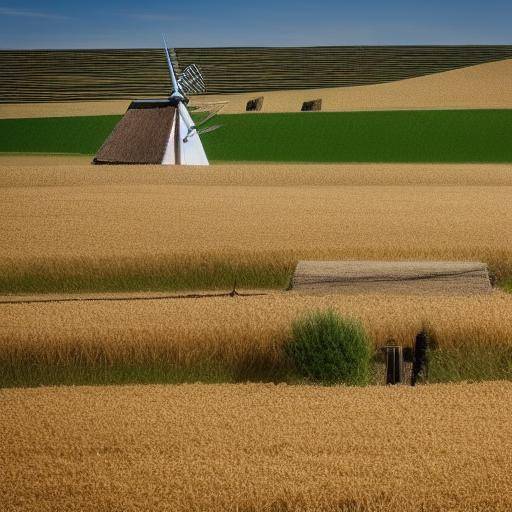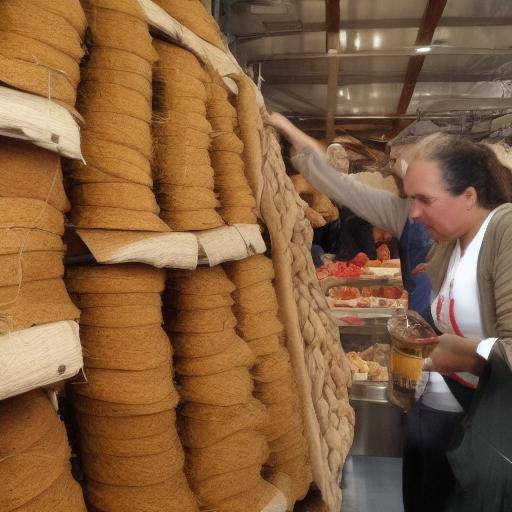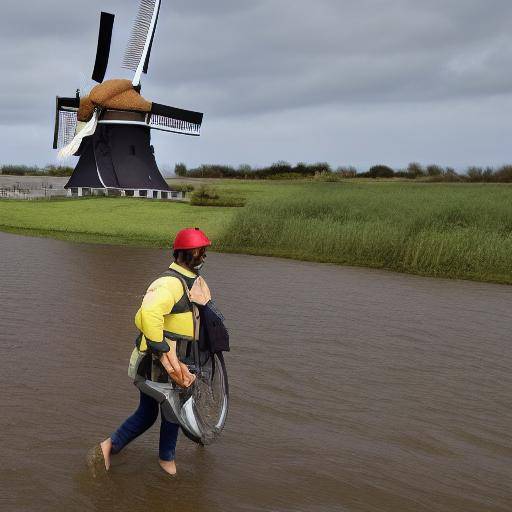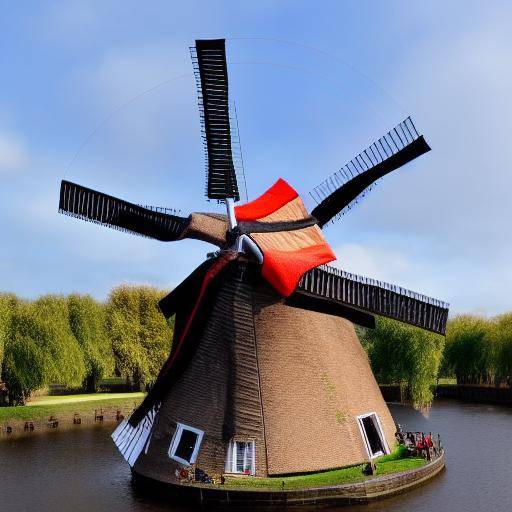
In the beautiful Dutch countryside, windmills remain an iconic symbol that evokes the rich history and stunning rural landscape of this land. This picturesque route, lined with running windmills, offers visitors a unique perspective of tradition, crafts and natural beauty that defines the Dutch experience. Join us on a journey through the history, culture and majesty of windmills in Holland.
Introduction
The windmills in the Netherlands represent an important part of their historical, cultural and technical legacy. Throughout this article, we will explore the crucial role they played in the development of the nation, the way they were integrated into the everyday life and the natural wonders around them. From its historical origin to its impact today, we will discover the fascinating history and the continuing relevance of these iconic monuments.
History and Background
The history of the windmills in Holland dates back centuries, when they became a symbol of the nation's innovative capacity. The first testimonies of its existence date back to the 12th century, and since then, they have played a vital role in water management, flour production and sustainable energy generation. Over the years, these mills have witnessed historical events, technological revolutions and cultural changes that have left an indelible mark on the Dutch identity.
Windmills have experienced significant evolution over the centuries, from the original wooden structures to the most advanced and efficient designs we see today. This technological development has been driven by the need to maximize its usefulness, adapt to the changing conditions and preserve the cultural heritage they represent.
More than simple historical monuments, Holland's windmills embody the entrepreneurial spirit and craftsmanship of their builders, as well as the ingenuity and resilience of the communities that depended on them for their livelihood.
Analysis in Deep
Windmills continue to play a relevant role today, serving as tourist destinations, cultural focus and symbols of environmental sustainability. As technology advances, windmills have also evolved, adopting new innovations to enhance their efficiency and adapt to the demands of the modern world.
The preservation and restoration of windmills are essential to safeguard their historical legacy and keep alive the tradition they represent. This continuous effort reflects Holland's commitment to its cultural heritage and generates a positive impact on the local economy and sustainable tourism.
Comprehensive review
As you tour the windmills route in Holland, visitors have the opportunity to immerse themselves in the richness of history, the unique architecture and the idyllic landscapes that characterize this region. Each mill tells a unique story and offers a fascinating perspective of its historical and cultural relevance.
Comparative Analysis: The windmills, Holland and its rural landscapes are intrinsically intertwined, as each complements and enhances the uniqueness of the other. The mills have found in the Dutch landscapes a perfect scenario, reflecting the fusion between nature and human engineering. Through its imposing presence in green meadows and winding canals, windmills contribute to the creation of a picturesque print that has captivated visitors from around the world.
Conclusions and FAQs
In conclusion, the route of windmills in the Netherlands is much more than a tourist trip; it is a living testament of the rich history, craftsmanship and natural beauty that make Holland an unforgettable destination. Whether for their cultural relevance, their economic impact or simply their aesthetic charm, windmills continue to play a crucial role in the fabric of Dutch society.
Frequently asked questions
1. What is the story behind the windmills in Holland?
Windmills in the Netherlands have a history dating back centuries, where they played a vital role in water management, flour production and sustainable energy generation. His presence has become a symbol of the rich Dutch tradition.
2. Why are they so important to the Dutch identity?
Windmills represent the innovative capacity and artisanal skill of the Netherlands. In addition, they have been fundamental in the development and resistance of local communities over the centuries.
3. What is the impact of windmills today?
In addition to its historical and cultural relevance, windmills contribute to sustainable tourism, generating a positive impact on the local economy. They are also living examples of environmental sustainability.
4. What kind of innovations have been implemented in modern windmills?
Modern windmills have integrated advanced technologies to maximize their efficiency and adapt to current demands while maintaining their traditional appearance.
5. What is the value of visiting the windmill route in the Netherlands?
Explore the windmills route allows visitors to immerse themselves in the richness of history, the unique architecture and the idyllic landscapes that characterize this region, offering an unforgettable experience.
6. How is the preservation of windmills in Holland being addressed?
The preservation and restoration of windmills are essential to safeguard their historical legacy. This effort reflects Holland's commitment to its cultural heritage and sustainable tourism.
In short, the route of windmills in the Netherlands is a celebration of tradition, innovation and natural beauty. As we explore this historical, cultural and technical legacy, it is clear that windmills continue to capture the imagination and heart of those who visit them, adding a lasting chapter to Holland's rich history.

